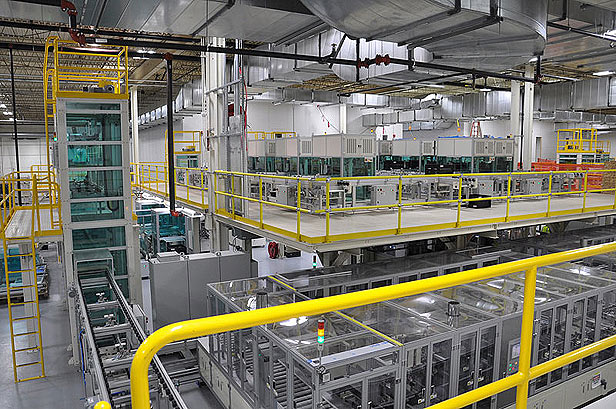A123 Systems Reports More Bad News

The financial numbers are pointing in the wrong direction for lithium-ion battery maker A123 Systems, a company founded 10 years ago based on technology developed at an MIT lab.
In its most recent quarter, A123 posted a net loss of $125 million, $40 million more than it lost in the previous quarter. It only brought in $11 million in revenue, down from $40 million in the previous quarter and $18 million a year ago. Meanwhile, its cash is dwindling, down from $187 million at the end of last year to $113 million at the end of the first quarter of this year. The situation is so bad that A123’s auditors have expressed doubt about the company’s ability to stay afloat as a “going concern.”
A123’s poor performance is due largely to the fact that it has to replace a large number of defective battery packs it sold to customers last year. Although these costs will be incurred over a few quarters, A123’s accountants lumped all the battery replacement costs together in this earnings statement. Even without its warranty issues, however, A123 might still be struggling. Its manufacturing costs are high, so the company loses money on every battery it sells. It loses as much as 57 cents per dollar of revenue from its sales to one customer, estimates Andrea James, an analyst for Dougherty.
To survive, A123 needs to raise more money. It expects to close a $50 million round of financing this week, but it needs to continue raising money, likely through partnerships with other companies.
The difficulties of A123 reflect the continuing struggles of many clean-tech startups. The company, which raised $345 million in an IPO in 2009, built a large factory in Livonia, Michigan, with the help of a $250 million grant from the U.S. government. It’s raised over a billion in private and public funding.
Yet for all its funding, A123 has had trouble bringing down costs to the point where it can make a profit. It can reduce costs in part by improving the technology, but it will also need to make batteries in larger volumes, which will allow it to get more out of its existing equipment and negotiate better supply contracts.
Reaching high volumes will depend on there being a market for its batteries. The biggest potential market is battery-powered vehicles, but sales of such vehicles have been slow, and it’s not clear that A123 will be the supplier for any battery-powered vehicles that do sell well.
On today’s call, A123 emphasized other potential markets for its batteries. For example, it could make batteries designed to help support the electrical grid or to replace the lead-acid batteries used to power the starter in cars. But those markets aren’t established yet, either, says Theodore O’Neill, an analyst for Wunderlich Securities. He says the grid business so far is just one-off demonstration projects, not repeatable business. “Demand just isn’t materializing for capacity as large as [the company] has built it,” he says.
A123 CEO David Vieau says that even with its current difficulties, the company expects to bring costs down to the point that it will start to make money on each battery it sells by sometime next year.
But that’s only if everything goes perfectly for the company, O’Neill says. “The goal is totally aspirational, based on what they could do in all the right circumstances, which never materialize. The company hasn’t met a single quarterly revenue target since it went public,” he says.
Updated 5/16 to reflect a regulatory filing by A123.
Keep Reading
Most Popular
Large language models can do jaw-dropping things. But nobody knows exactly why.
And that's a problem. Figuring it out is one of the biggest scientific puzzles of our time and a crucial step towards controlling more powerful future models.
The problem with plug-in hybrids? Their drivers.
Plug-in hybrids are often sold as a transition to EVs, but new data from Europe shows we’re still underestimating the emissions they produce.
Google DeepMind’s new generative model makes Super Mario–like games from scratch
Genie learns how to control games by watching hours and hours of video. It could help train next-gen robots too.
How scientists traced a mysterious covid case back to six toilets
When wastewater surveillance turns into a hunt for a single infected individual, the ethics get tricky.
Stay connected
Get the latest updates from
MIT Technology Review
Discover special offers, top stories, upcoming events, and more.